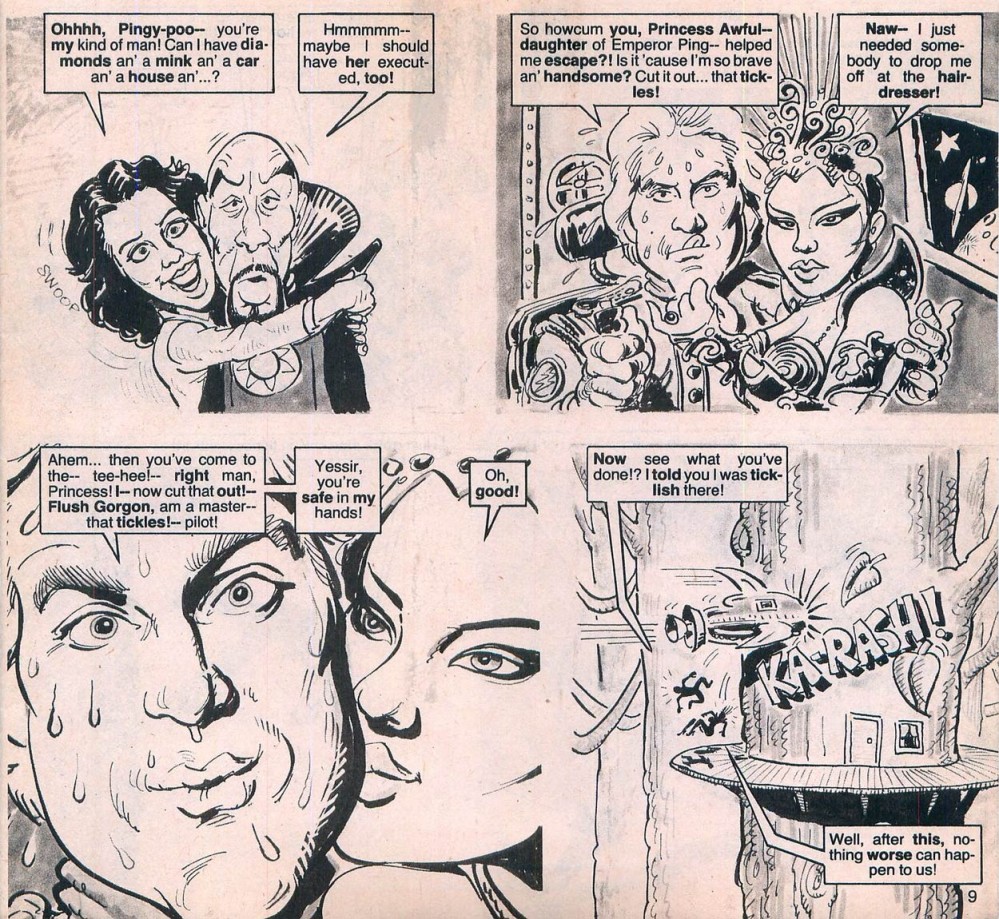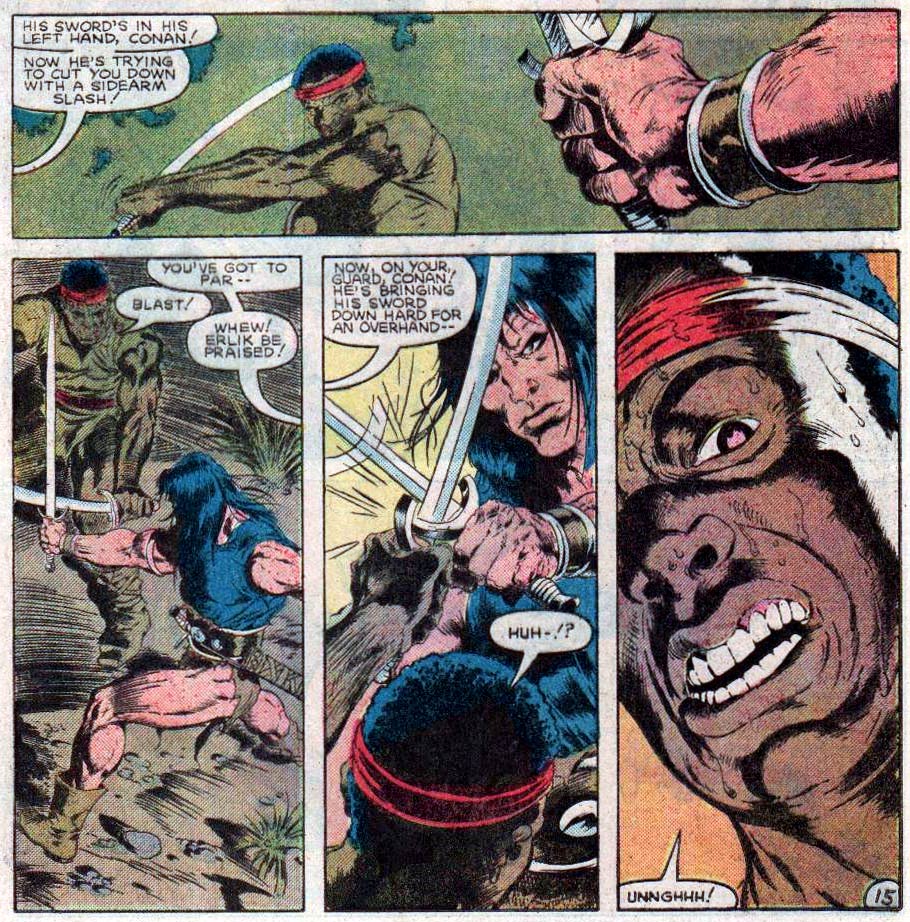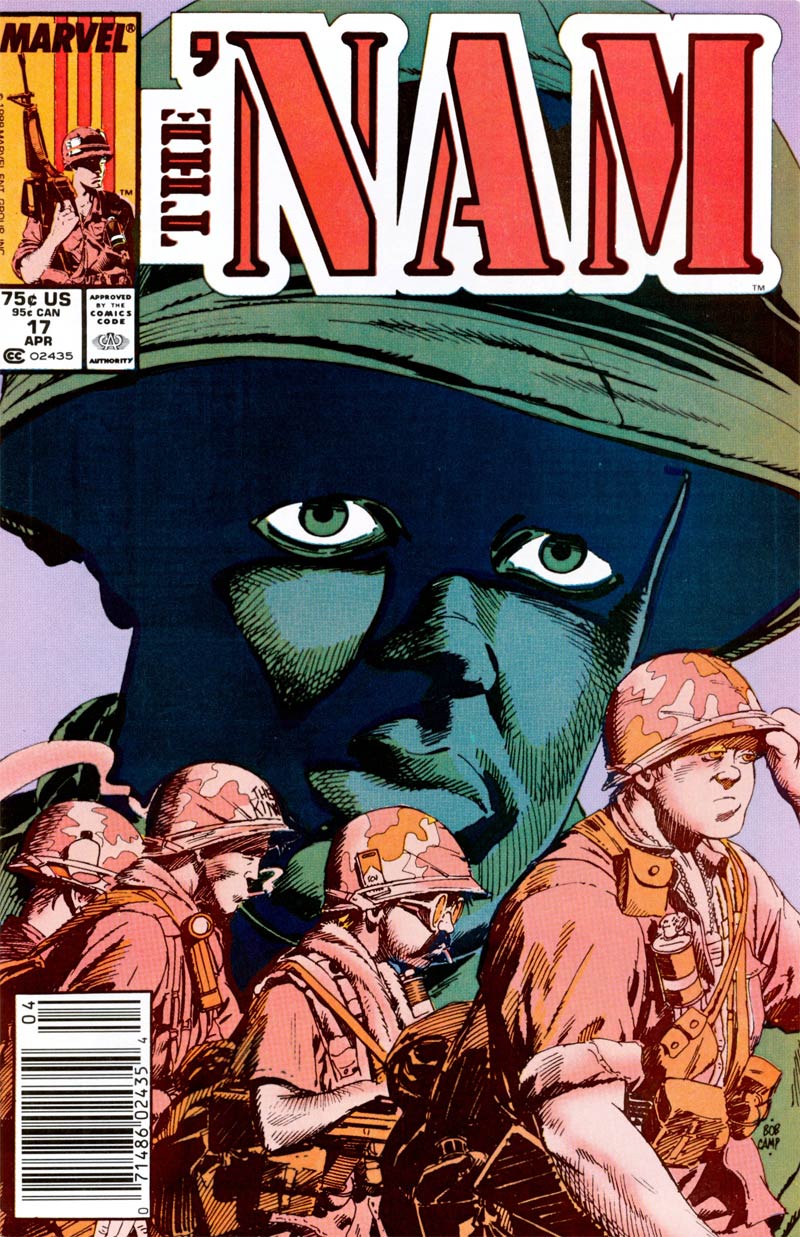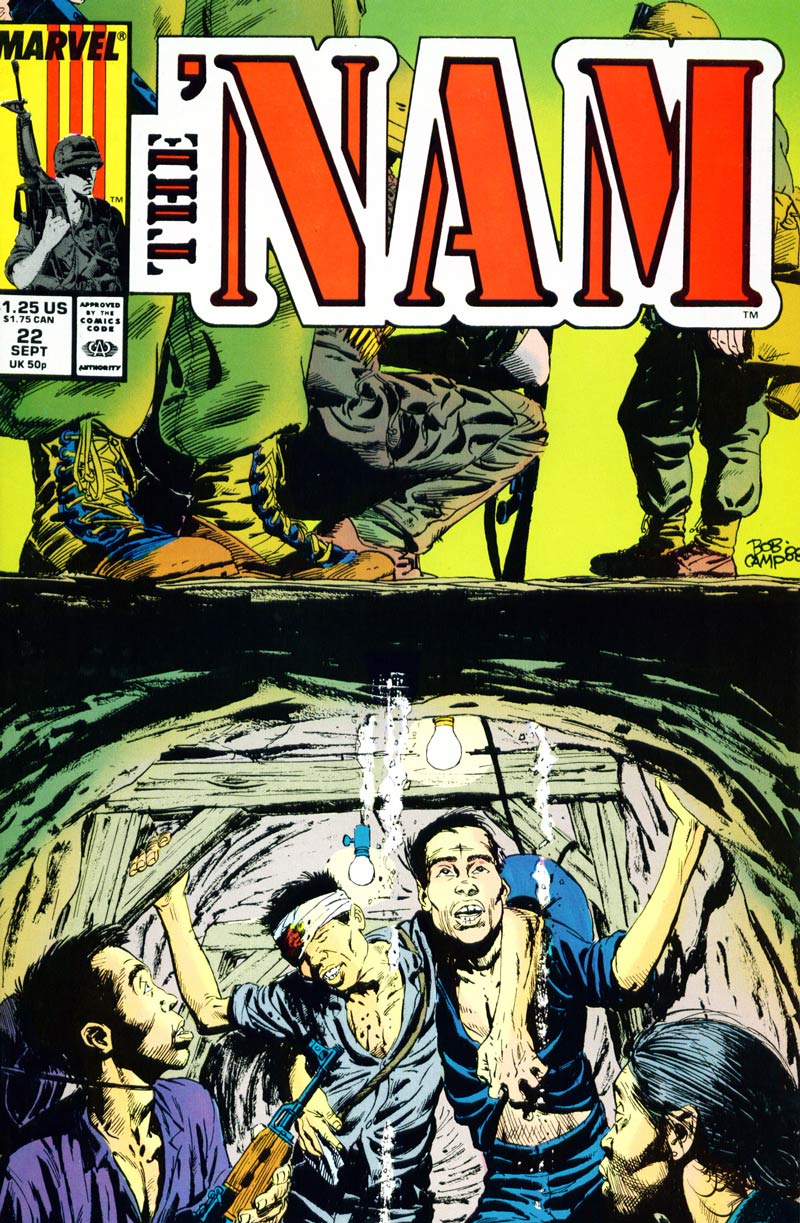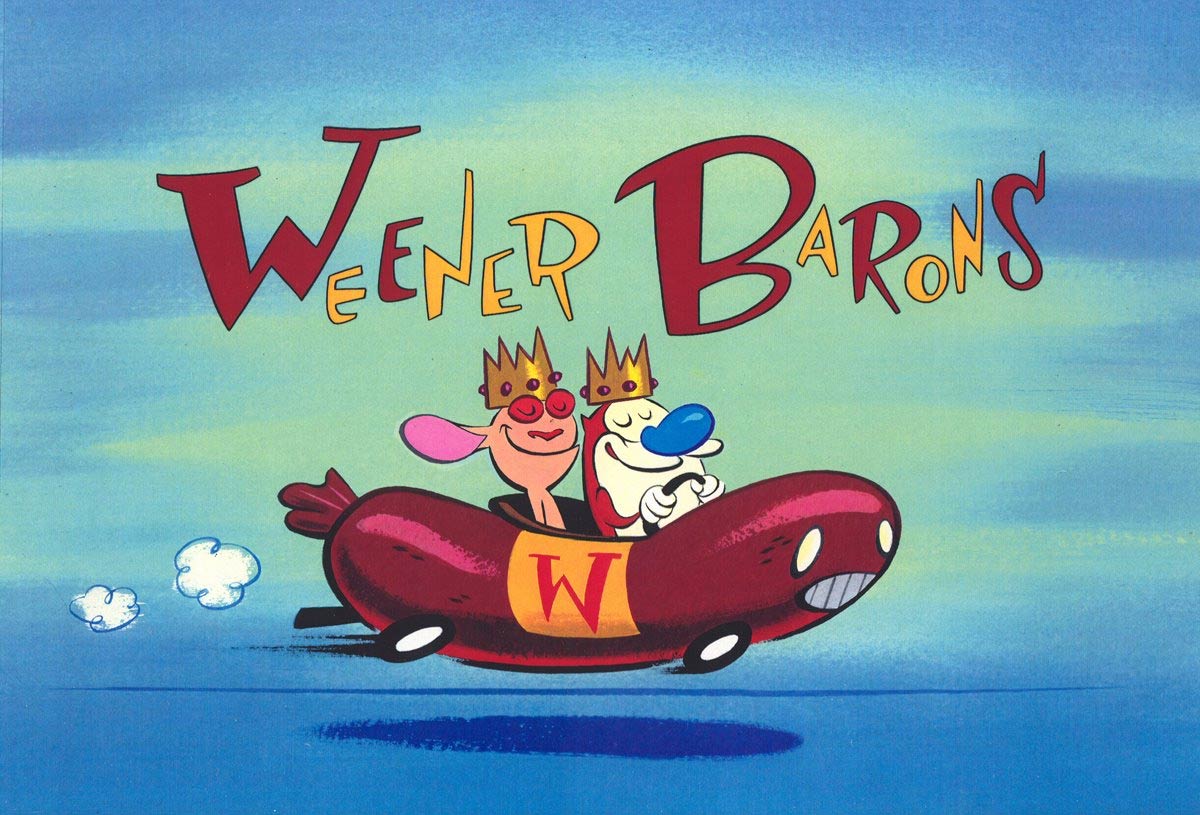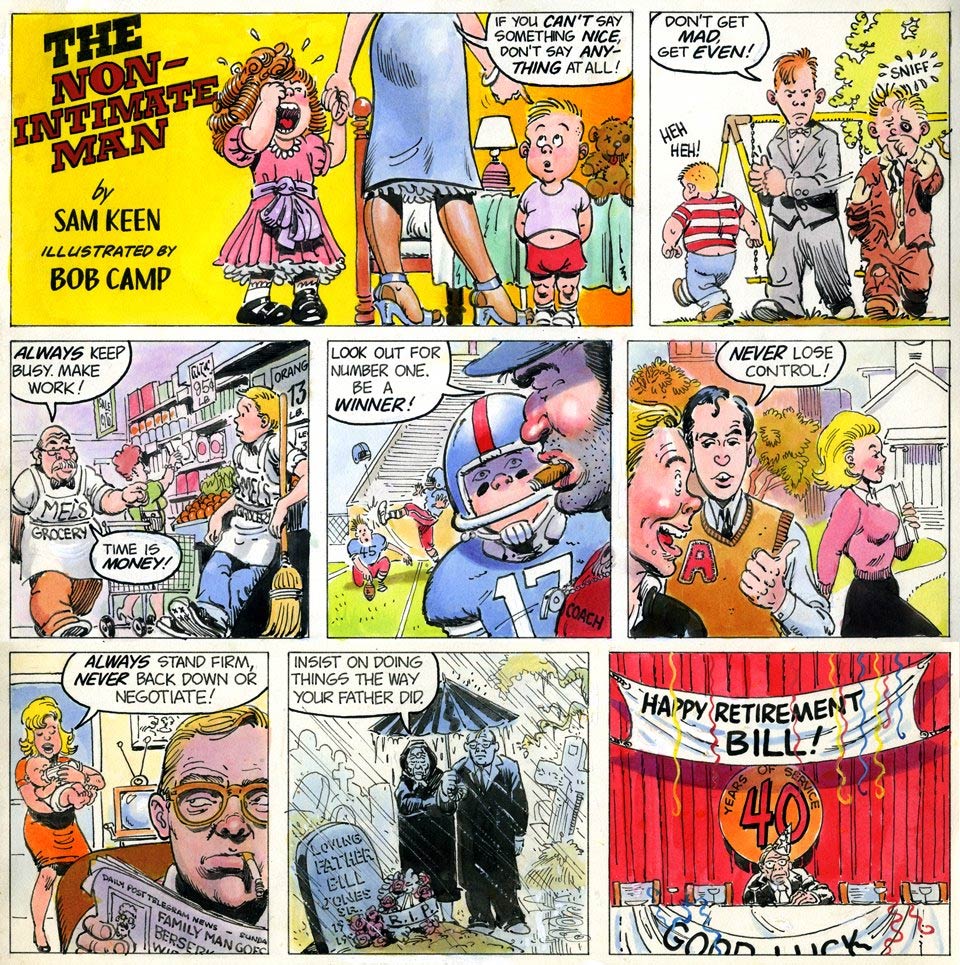'Flush Gordon' (Crazy Magazine #75, 7 April 1981), a spoof of the 1980 film 'Flash Gordon'.
Bob Camp is an American animator, comic artist and TV writer, best-known for his work on John Kricfalusi's 'Ren & Stimpy' series and Stephen Hillenburg's 'SpongeBob Squarepants'. He was one of the main creative contributors behind 'Ren & Stimpy', eventually taking over the show after Kricfalusi got fired. As a comic artist, Camp worked for Marvel Comics on titles like 'G.I. Joe', 'Conan the Destroyer', 'The 'Nam' and the satirical humor magazine Crazy.
Early life and career / Crazy
Robert Camp was born in 1956 in Gregg County, Texas, and grew up with a love for movies and cartoons. He is a huge fan of Charlie Chaplin, Buster Keaton, Laurel & Hardy, Stanley Kubrick, Peter Sellers, Monty Python, Tex Avery, Bill Plympton, Terry Gilliam, Walt Disney and Mad Magazine's Don Martin. Throughout his career, Camp has worked in many different creative fields (comics, animation, illustration, portrait art) to ensure that he would always have something to work on, and get paid for it. Originally, he made a living as a street caricature artist, working at Cape Cod during the summer holidays. There Camp met Gary Hallgren and Larry Hama, through whom he found his way to the pages of Crazy Magazine.
Crazy Magazine
Between 1981 and 1982, Camp started out making movie parodies for Crazy Magazine, Marvel Comics' answer to the legendary humor magazine MAD. Together with writer Paul Kupperberg, he spoofed movies like 'Smokey and the Bandit II' ('Snookey and the Band Aid II' in #72, March 1981), 'Flash Gordon' ('Flush Gordon' in #75, June 1981), 'Raiders of the Lost Ark' ('Raiders of the Lost Argh' in #83, February 1982), 'Time Bandits' ('Time Boo-Boos' in #86, May 1982), 'Quest for Fire' ('Quest for 3rd Degree Burns' in #89, August 1982), 'Blade Runner' ('Blade Bummer' in #91, October 1982) and several others.
Further Marvel work
In 1985, Camp was co-penciller with Rod Whigham, Mark Bright and Larry Hama for issues #35 and #36 of 'G.I. Joe, A Real American Hero', the tie-in series to the popular 1980s TV series. Camp also penciled issue #160 of Marvel's 'Conan the Barbarian' in 1984, and served as John Buscema's inker in six issues of this title in 1985. In addition, he inked the second issue of the comic book adaptation of the 'Conan the Destroyer' film (1985), and was a cover artist for 'The 'Nam' (1988). Camp stayed with Marvel until 1988.
Interviewed by Alex Grand at the Dallas Fantasy Fair (2018), Camp looked back on his departure from comics in favor of animation: "I was glad to be out of comics because comics really wasn’t a way to make money. But like 10 minutes after I quit doing comics, they started paying residuals, so people started making money in comics right after I got out."
Early animation career
In 1985, Camp began his animation career at Rankin/Bass as a character and background designer for shows like 'ThunderCats', 'Silverhawks', 'TigerSharks', 'Mini Monsters', 'Karate Kat' and 'Street Frogs'. His stint at 'ThunderCats' came about because his roommate Jim Meskimen had worked on the show and was looking for someone to take his place. A year later, Camp joined the animation studio DiC, where he made designs for 'The Real Ghostbusters', based on the popular 1984 movie 'Ghostbusters'. He enjoyed working on this particular show, learning the ropes from colleague Bruce Timm.
Like most animators at the time, Camp resented working on bland, unimaginative TV cartoons, only made to sell toys and other merchandising. In 1990, he moved to Warner Brothers Television, where he had the chance to write funny and creative scripts for series like 'Tiny Toon Adventures' (1990-1993). But to Camp's taste, even 'Tiny Toons' played it too safe, and the promise that they would be given the same creative freedom as the Looney Tunes artists in the 1930s-1960s was never fulfilled.
Cover illustrations for 'The 'Nam'.
Ren & Stimpy
In 1988, Camp worked on John Kricfalusi's reboot of Bob Clampett's classic animated series 'Beany and Cecil', titled: 'The New Adventures of Beany and Cecil'. Their show ran on ABC, but was canceled after six episodes because executives tried to keep everything child friendly while Kricfalusi wanted to take a more offensive route. Eventually, even Clampett's heirs weren't too pleased with the end result, but kept supporting it. The best thing about the experience was that it left Kricfalusi with a reliable team of animators, among them Bob Camp, Bill Wray, Gabe Swarr, Scott Wills, Vicky Jensen, Jim Gomez, Bruce Timm, Jim Smith and Lynne Taylor.
In 1989, Kricfalusi, Camp, Jim Smith and Lynne Taylor co-founded their own independent animation company, Spümcø. It mostly employed animators fired from other studios, or those who quit out of frustration. Kricfalusi envisioned a more personal animated TV series harking back to the Golden Age of Animation, when skilled artists were employed and allowed to innovate. In 1991, his series, 'The Ren & Stimpy Show' (1991-1995), was finally greenlighted and debuted on Nickelodeon. Its combination of gross-out comedy, surreal plots and subversive, often nerve-wreckingly intense content polarized viewers, but also grew a strong cult following.
Camp was one of 'Ren & Stimpy''s main writers, creative directors, character designers and storyboard artists. He designed several of the show's title cards. Occasionally he also did some of the voices, like drill sergeant in the episode 'In the Army' (1992), the dog catcher in 'Big House Blues' (1992) and Ewalt the cowboy in 'Out West' (1992). When Kricfalusi was fired from 'Ren & Stimpy' in 1992, Camp became the new director, carrying the series on until 1995.
Title card for the Ren & Stimpy episode 'Weiner Barons'. Camp designed most of the series' title cards.
Cartoon Network and Nickelodeon
After 'Ren & Stimpy' was concluded in 1995, Bob Camp and writer Jim Gomez developed a new series for Nickelodeon named 'Kid Komet and Galaxy Gal', which unfortunately never aired. Camp was more successful at Cartoon Network, where he provided storyboards for 'Cow and Chicken' (1997-1999), 'I Am Weasel' (1997-1999), 'The Grim Adventures of Billy & Mandy' (2003) and 'Mighty Magiswords' (2016). With Arthur Filloy, he co-created and wrote the short 'Lucky Lydia' (2000), which aired on the Cartoon Network showcase series 'The Cartoon Cartoon Show'. It was about a little girl, whose curiosity often gets her into trouble, but who however manages to avoid disaster through her good fortune. Camp was additionally co-director and writer for 'Robotboy' (2006-2008).
Since 1999, Camp has been a scriptwriter for Stephen Hillenburg's 'SpongeBob Squarepants' on Nickelodeon. For the Disney Network, he made storyboards for Sandro Corsaro's TV series 'Kick Buttowski: Suburban Daredevil' (2010).
Hollywood films
Camp wrote the storyboard for the live-action version of 'How the Grinch Stole Christmas!' (2000), based on Dr. Seuss' children's book, borrowing much of its imagery from Chuck Jones' classic 1965 TV special adaptation. At Warner Brothers, he scripted the films 'Osmosis Jones' (2001), 'Cats & Dogs' (2001), 'Scooby-Doo' (2002) and 'Looney Tunes: Back in Action' (2003). For the studio Blue Sky, he also wrote the storylines for 'Robots' (2005) and 'Ice Age: The Meltdown' (2006).
Album covers
Camp made album covers for two bands assigned with the hip hop and electronic music label Tommy Boy Records. He designed the cover for 'Renegades of Funk!' (1983) by the hip hop collective Afrika Bambaataa & Soul Sonic Force and also livened up 'Jam On Revenge' (1984) and 'Space Is The Place' (1984) by the rap group Newcleus, all in the style of a comic book cover. Afrika Bambaataa deliberately wanted a visual look comparable to the Funkadelic records by Pedro Bell. Camp also designed the sleeve of 'Crock O' Christmas' (1993), a Ren & Stimpy-themed record.
Other activities
Bob Camp has also been active as an art teacher at the School of Visual Arts in New York City.
'The Non-Intimate Man', scripted by Sam Keen, drawn by Bob Camp. Cover piece for Family Weekly magazine (2008).


